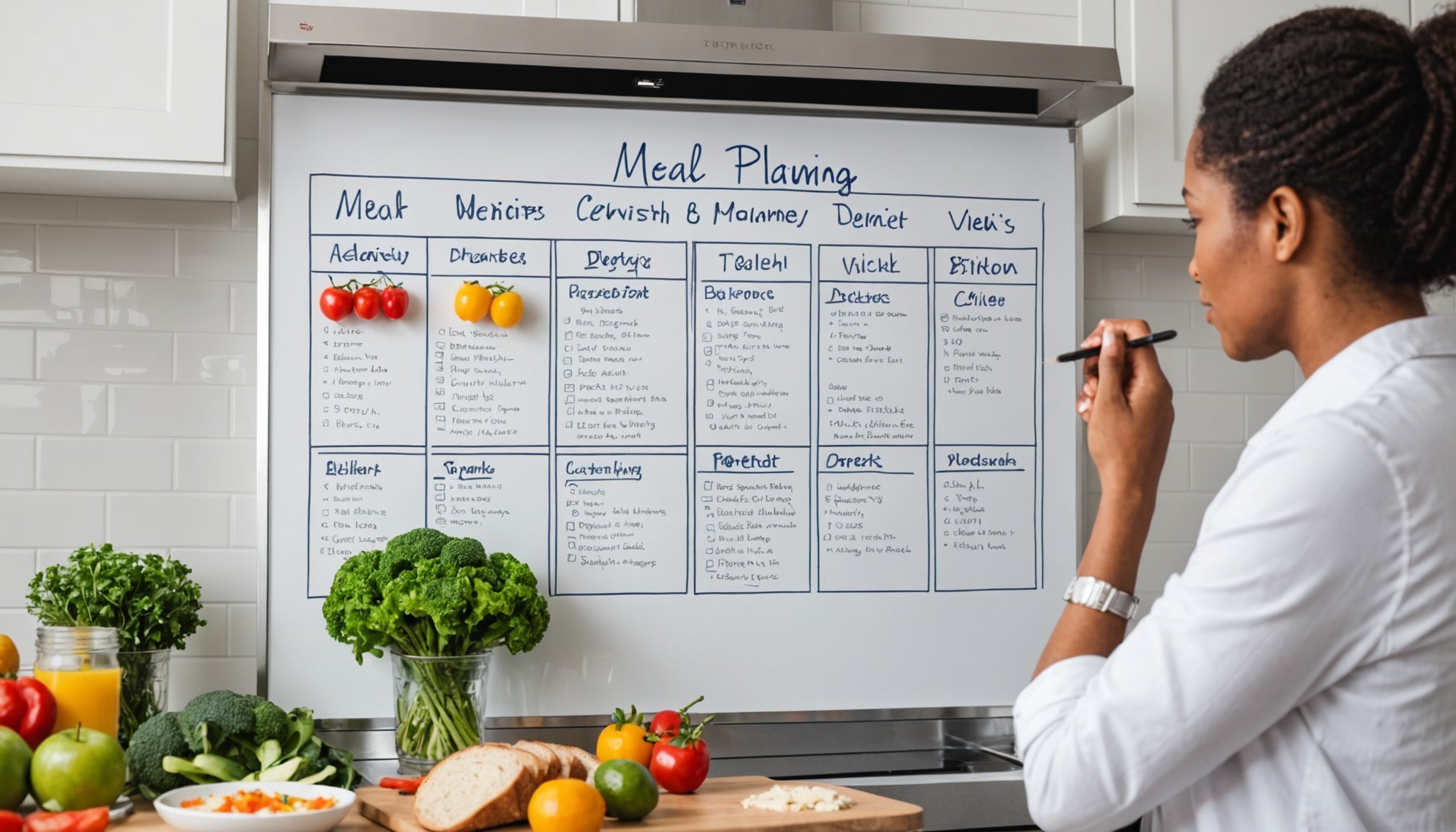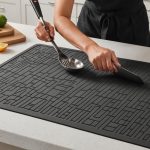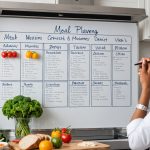Overview of Meal Planning Whiteboards
Meal planning whiteboards are essential tools for streamlining meal preparation. They serve as visual aids for organizing weekly meals, ensuring efficient time management in the kitchen. With a clear display of meal plans, these boards can significantly reduce the daily stress of deciding what to cook.
The market offers various types of meal planning whiteboards, each catering to different needs and preferences. Some are traditional dry-erase boards, ideal for families preferring a simple, hands-on approach. Others are magnetic, allowing attachments like recipe cards, making meal planning an interactive experience. There are also digital boards equipped with apps for tech-savvy users seeking seamless integration with digital calendars and grocery apps.
In parallel : Transforming your cooking experience: the impact of kitchen mat texture and color on comfort and fatigue relief
When selecting a meal planning whiteboard, consider key features. Size is crucial; ensure it fits your kitchen space and provides enough room for detailed plans. The versatility of the board is another consideration—magnetic surfaces might be more beneficial if you wish to incorporate additional materials. Visibility and ease of use also matter. Opt for boards with clear, legible surfaces. Reusability and easy cleaning are significant, especially for those frequently updating plans. Choosing the right whiteboard can transform how you approach meal planning, providing structure and motivation.
Advantages of Meal Planning Whiteboards for Weight Loss
Using a meal planning whiteboard can be a game-changer for those aiming for weight loss. Structured organization aids in visually outlining meals, making it easier to stick to a healthy eating regimen. With this visual tool, seeing your plans displayed helps maintain motivation and commitment toward your weight loss goals. By planning in advance, you are less likely to make impulsive food choices that could derail your progress.
Additional reading : Transform your diet: discover how a programmable coffee maker with calorie tracking can enhance your wellness journey
Meal planning introduces several benefits. It enhances dietary adherence by providing a visual and interactive platform, making it simple to revise or tweak meal choices. More deliberate planning also reduces food waste by ensuring you only purchase what is necessary, aligning with healthier and more sustainable eating habits.
Furthermore, this method offers a comprehensive overview of your nutritional intake, facilitating improvements toward balanced consumption. By consistently using a meal planning whiteboard, you can observe patterns and adjust them, leading to gradual and sustainable weight loss. This tangible commitment to meal planning develops a disciplined mindset—crucial for those dedicated to long-term lifestyle changes.
With continued use, individuals can enjoy not only physical transformations but also significant improvements in overall wellbeing.
Practical Tips for Using a Meal Planning Whiteboard
A meal planning whiteboard can be a game-changer for effective kitchen organization and efficient time management. To begin, outline your weekly meal plan. Designate sections on the board for daily menus, noting which meals you’ll prepare each day. This visual representation helps to maintain a clear overview of your week’s meals.
Incorporating healthy recipes is simple: choose one or two days dedicated to experimenting with nutritious dishes. This not only inspires variety but also ensures balanced nutrition across your meal plan. Use your whiteboard to list ingredients needed for each meal, streamlining your grocery shopping experience and reducing the likelihood of impulse buys.
Maintaining flexibility is crucial. Life is unpredictable, and a rigid plan can lead to unnecessary stress. Always leave a day or two open for spontaneous choices or leftovers. If you deviate from the plan, just wipe the board clean and adjust accordingly. This adaptability fosters a positive meal planning experience, striking a balance between structure and flexibility.
These meal planning tips not only enhance kitchen efficiency but also turn the process into a sustainable habit, maximizing the benefits of your meal planning whiteboard.
Real-Life Success Stories with Meal Planning Whiteboards
In the arena of weight loss, success stories offer motivation and proof that change is possible. One notable case involves Jane, a busy mother of two, who shared her journey in which a meal planning whiteboard played a critical role. Before adopting this method, Jane struggled to prepare balanced meals consistently. However, with the whiteboard, she discovered efficiency in planning her family’s weekly meals. This saved time and helped her lose over 20 pounds in six months. Her experience echoes the sentiment that organizing meals visually encourages accountability and adherence to one’s dietary goals.
Testimonials from others mirror Jane’s positive experience. For instance, Tom, a corporate executive, mentioned how seeing his weekly meal plan helped avoid impulsive dining choices, contributing to his significant weight loss. These success stories underline the transformation that structured meal planning can create. Key lessons learned from these stories include the power of visual reminders in reinforcing healthy habits and the potential of reducing diet-related stress by having a clearly defined plan. By leveraging these insights, individuals can develop a sustainable approach to reaching their weight loss targets through organized meal preparations.
Product Recommendations for Meal Planning Whiteboards
When considering meal planning products, it’s essential to choose the best whiteboards that fit your lifestyle and kitchen needs. Whether you’re a seasoned planner or starting from scratch, having the right tools can enhance your meal planning efficiency.
Popular Meal Planning Whiteboards come in various forms, from magnetic options that stick to your fridge to more substantial wall-mounted versions. These whiteboards often feature grids for each day of the week, sections for grocery lists, and even spaces for notes. Opt for boards that are durable, easy to clean, and have smooth writing surfaces. Some versions include additional accessories like pens, erasers, and magnets, adding value to your purchase.
For those on a tight budget, there are several budget-friendly options that do not compromise on quality. Simple chalkboard-style products can be a cost-effective choice yet still offer the necessary planning space.
However, it’s crucial to be aware of potential drawbacks. Some boards may have issues with staining over time, affecting their usability. Selecting a whiteboard with a protective coating can mitigate these issues.
Ultimately, the right meal planning whiteboard can be a vital kitchen tool, streamlining your meal prep process and helping keep your meal organization on track.
Encouragement and Motivation in Meal Planning
Keeping motivation high during meal planning can be a challenge, yet it’s crucial for success. One effective strategy is to embrace meal planning strategies that align with personal preferences and lifestyle. Customising meal plans based on what you enjoy eating can sustain interest and commitment.
A key aspect is goal setting—begin by defining clear, achievable objectives. Rather than aiming for drastic weight loss, focus on incremental goals, like incorporating more vegetables into daily meals or cooking at home more often. These small changes can accumulate into significant progress over time.
Tracking progress is indispensable in maintaining motivation. By leveraging digital tools or simple journals to record meals and track food intake, it becomes easier to visualise achievements. Celebrate small victories, such as sticking to a meal plan for a week or trying a new healthy recipe. These celebrations reinforce positive behaviour and encourage continued commitment.
Remember, meal planning isn’t just about what you eat; it’s about nurturing a healthier, balanced lifestyle. Staying motivated through strategies, setting feasible goals, and appreciating your progress can transform meal planning from a daunting task into an enjoyable journey towards well-being.










